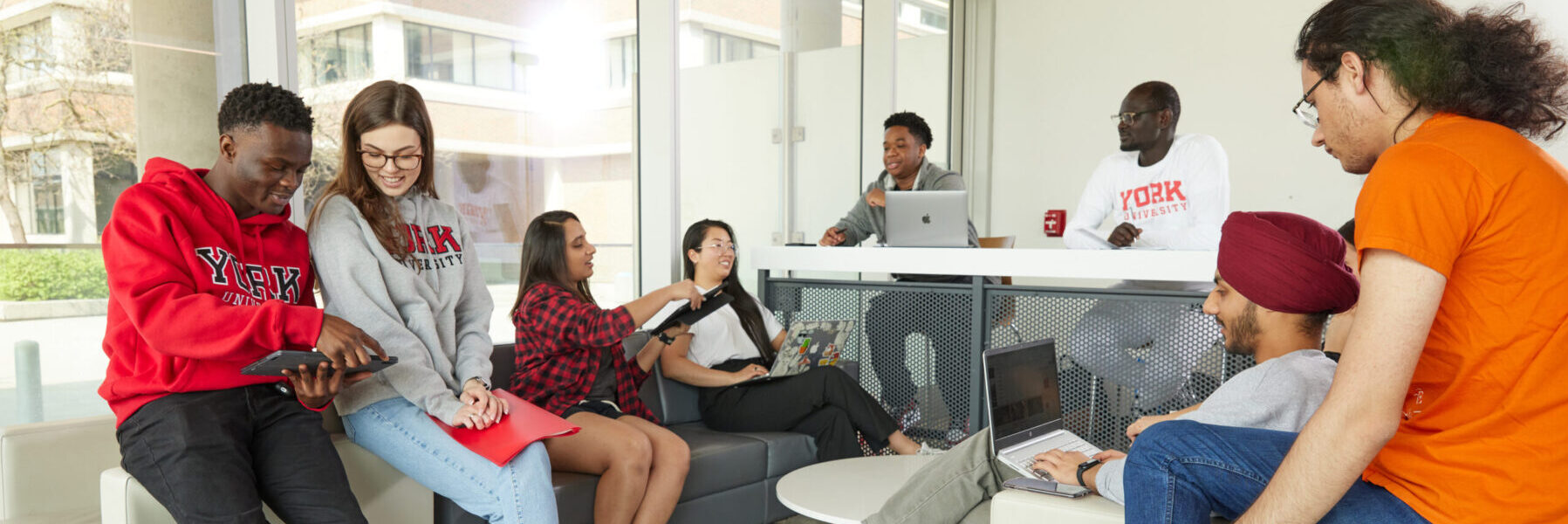
It can be a challenge to implement active learning in post-secondary classes that range in size from a handful of students to as many as 500.
Three members of the Department of Psychology in York’s Faculty of Health have found creative ways to keep students engaged and deliver high-quality education, regardless of class size.
Susan Murtha: Technology Role in Healthy Aging
Susan Murtha was inspired by reading she did on a sabbatical to develop a graduate class for psychology called Technology's Role in Healthy Aging. The asynchronous, online course teaches students about psychological factors – such as cognitive, social and physical/brain motivation – that impact technology use, adoption and acceptance among older adults.

For a significant project in the course, Murtha, an associate professor, asked her students to develop a plan and teach an older adult at least one skill about technology. Earlier, smaller assignments prepared students by having them question their biases and consider the ethics of nudging someone to use technology who perhaps did not want to.
Each of the course’s six students worked with an older adult, some with a grandparent, some with a stranger. The students began by conducting an interview to identify the challenges the older adult faced in using technology.
Students heard various needs expressed by participants: one older adult wanted to learn to use artificial intelligence (AI); another wanted to learn about their smartwatch; and a third wanted to know how to find and use emojis to text back to their grandchildren.
One participant didn’t want to learn anything about technology, until the student used voice-activation on the television remote control to change the channel, which the older adult expressed interest in learning how to do.
Murtha says she is pleased with the outcome of this first offering of the course.
“The students learned that older adults come with their own unique requirements, beliefs and motivations about technology,” Murtha says. “The students also reinforced that for older people to experience an age-friendly world, technology must be designed with their needs and abilities in mind.”
Andrew Brankley: Psychology and Law
Law comes to life in Andrew Brankley’s course, Psychology and Law, unhampered by the size of the class of about 200 students.
The assistant professor emphasizes experiential learning because, Brankley says, it keeps students engaged and focused on learning meaningful skills and critical thinking.

The course focuses on the Canadian justice system and divides study into police, judiciary and correctional services units. Brankley has students participate in debates, mock trials and role-playing games in the undergraduate course.
Multimedia is a large part of his teaching with videos, podcasts and interviews recommended to supplement learning. Students play judge, jury and police, applying knowledge they learn in class to real-life situations.
One exercise had students address violent car robberies, one of many instances of using real-world scenarios. Brankley asked students to create a system-level response to the problem, and were offered solutions – some that worked, some that didn’t. Students received points for choosing effective solutions, such as officers with high intelligence and problem-solving skills. They lost points for choosing such strategies as telling residents to leave their keys at their front door in cases of home invasion (a strategy suggested in real life by a police officer to minimize instances of assault).
Brankley demonstrated the impact of their decisions in the real world through news articles and clips. He says he wants student to see he isn’t dictating right and wrong answers. Instead, he wants to provide materials to show how the public responded to each police response.
A 200-student class can present challenges when it comes to applying experiential education in the classroom. Sometimes Brankley doubles up exercises, which can add another level of engagement, such as when he sends two juries out to deliberate the same case, then return to reflect on their verdicts which frequently do not match.
“Discussion of the criminal justice system in society present students with pre-packaged attitudes without reflection,” Brankley says. “By using experiential activities throughout my course, I hope to sensitize them to attitudes and thoughts they hold, which they adopted, rather than thought through. I want the students to critically examine their own beliefs and attitudes and choose those most congruent with their values.”
Alisha Salerno: Introductory Psychology 1010
Alisha Salerno uses an active learning approach to teaching large psychology classes, such as the three classes she taught this semester made up of 200, 280 and 500 students.
The sessional assistant professor teaches Introductory Psychology and specializes in facilitating in-class activities to keep student engagement high.

One way she achieves this is to strategically divide her classes into small, diverse groups to discuss real-life scenarios and encourage students to apply classroom concepts and reflect on their learning. She actively circulates the room, starting from different locations each time, whether among the rows of desks or up further in the balcony seats, to foster a sense of community and personal connection.
Salerno incorporates icebreakers at the beginning of every class and gamifies activities to keep the atmosphere lively and engaging.
For instance, a recent icebreaker posed the question: would students rather give up social media or eat the same dinner every night? Most students chose the latter, which sparked further discussion in the class.
In another example of integrating meaningful fun into the classroom, Salerno asked students to create Valentine's Day cards using information from her biopsychology lecture. A few of her favourites were: “Did you hit my cerebellum? Because I keep falling for you,” and “Must be my amygdala because you're playing a key role in my arousal.”
“We all laugh. We just laugh. It's good. Kind of breaks the ice,” Salerno says. “People learn better if they’re laughing.”
Through these approaches, Salerno ensures her students are immersed in active learning that makes classroom learning both engaging and effective.
With files from Julie Carl
